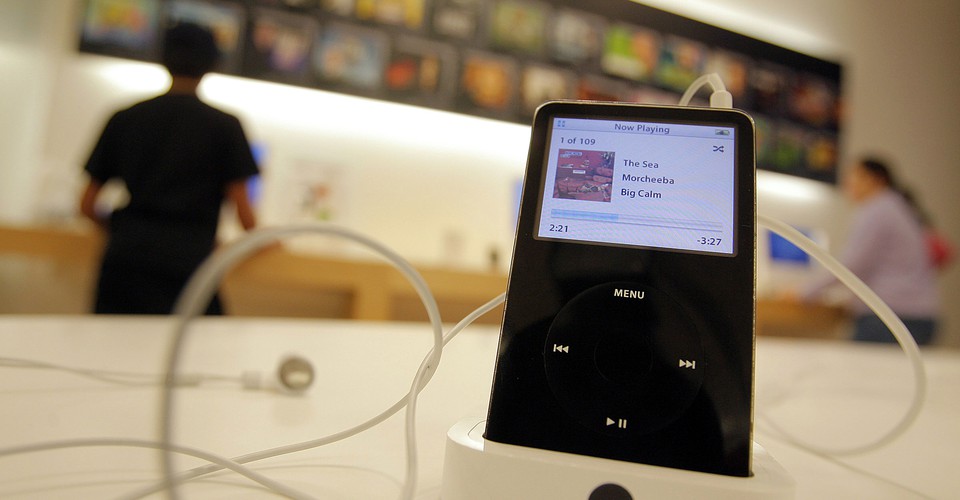
Portable Music Players
Music has always been an important part of every human being, and in one way or another, people get to experience music and melodies in their lives. However one of the most important technological breakthroughs in history was the invention of portable music whiche meant, having music with you as if you were listening to your oun soundtrack. The feeling of being in a movie or making the simplest things in life more enjoyable was not a little thing for humanity.
The Sony Walkman

The real first big step towards portable music was the Sony Walkman which was released in 1979.
This moment in history is described in a Time article:
“The Walkman wasn’t a giant leap forward in engineering: magnetic cassette technology had been around since 1963, when the Netherlands-based electronics firm Philips first created it for use by secretaries and journalists. Sony, who by that point had become experts in bringing well-designed, miniaturized electronics to market (they debuted their first transistor radio in 1955), made a series of moderately successful portable cassette recorders.
But the introduction of pre-recorded music tapes in the late 1960s opened a whole new market. People still chose to listen to vinyl records over cassettes at home, but the compact size of tapes made them more conducive to car stereos and mobility than vinyl or 8-tracks. On July 1, 1979, Sony Corp. introduced the Sony Walkman TPS-L2, a 14 ounce, blue-and-silver, portable cassette player with chunky buttons, headphones and a leather case. It even had a second earphone jack so that two people could listen in at once.
All the device needed now was a name. Originally the Walkman was introduced in the U.S. as the “Sound-About” and in the UK as the “Stowaway,” but coming up with new, uncopyrighted names in every country it was marketed in proved costly; Sony eventually decided on “Walkman” as a play on the Sony Pressman, a mono cassette recorder the first Walkman prototype was based on. First released in Japan, it was a massive hit: while Sony predicted it would only sell about 5,000 units a month, the Walkman sold upwards of 50,000 in the first two months. Sony wasn’t the first company to introduce portable audio: the first-ever portable transistor radio, the index card-sized Regency TR-1, debuted in 1954. But the Walkman’s unprecedented combination of portability (it ran on two AA batteries) and privacy (it featured a headphone jack but no external speaker) made it the ideal product for thousands of consumers looking for a compact portable stereo that they could take with them anywhere. The TPS-L2 was introduced in the U.S. in June 1980”.
In many ways the Sony Walkman remains to be one of the biggest revolutions in technology and music in history with its very small design and great audio quality. It was about having the music you wanted anywhere you wanted, and that was mindblowing.
CD players

Eventually, almost everyone moved to the CD format, but it was a bit uncomfortable in a way due to its size, but still, audio fidelity was better than casette tapes.
One step forward in every way but it’s portable capabillities, with the discman being the closest thing to, carry a music playr with you when it came to CDs.
MP3, ipod

While having a discman was technically the most up to date music player, it wasn’t as revolutionary or portable as the Sony Walkman.
This made the Walkman a very reliable device until mp3 players came into our lives.
It wasn’t until 1998 that the world’s first MP3 player, the MPMan F10, was developed by a South Korean company called SaeHan Information Systems. While it was a very groundbreaking first attempt, the idea of having a small device with your favorite songs in digital format, was not made popular until the release of the iPod which was in 2001.
In way, the mp3 player did all the same things the Sony Walkman did but now in digital format and with a lot more room for music. The iPod did all of this beautifully with a great interface and futuristic design.
Cellphones (Smartphones)

For a bit more than 10 years an mp3 player was a must have, until smartphones and streaming platforms became so much popular.
Nowadays cellphones are able to perform an incredible amount of tasks, working as a small computed in the palm of your hands, and of course, one of these tasks is being a portable music device.
With apps such as Apple music, Spotify and Deezer, one of the easiest ways to bring music with you is just to install the right app, plug in your headphones and start listening wherever you want.
Of course this usually means that you need to stay connected to the internet and many people actually prefer this access to unlimited amounts of music but through the internet, rather than building a library of music just like the ipod did.
